Contents
Most of the fantastic results of beginners, for example, expelled moonshine 98 degrees, or in actively fermenting and winning back 0% alcohol, are due to the incorrect use of measuring devices. If you lower the hydrometer into any liquid that does not contain alcohol, the device will still show a certain strength value, since it gives a result based on density. I will tell you how to use a spirit meter to always get the right readings. Despite the external primitiveness and simplicity of design, there are many nuances in the work.
An alcoholmeter is a type of hydrometer (a device that measures the density of liquids) designed to determine the amount of ethyl alcohol in a solution consisting of alcohol and water without other impurities that can affect the density.
Most models are made in the form of a glass float, the wide lower part of which is filled with a weight of shot and filled with resin (some models use mercury), and the upper narrow part contains a paper scale with divisions.
Types of alcohol meters
Laboratory – a professional hydrometer for determining the strength of the solution with a high degree of accuracy. In Russia, the most popular alcohol meters of this type, corresponding to GOST 18481-81, are sets ASP-1 (11 pieces in a set), ASP-2 (18 pieces), ASP-3 (3 pieces) with different gradation.
Most experienced moonshiners use the ASP-3 kit, which has a scale division of 1%. The set consists of three hydrometers: 0-40%, 40-70% and 70-100%. This is enough to make homemade alcohol. ASP-1 and ASP-2 have a gradation of 0,1%.
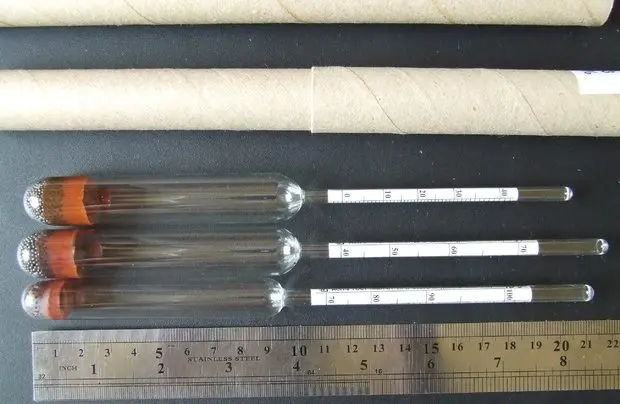
Domestic – an alcoholmeter for measuring the strength of alcohol, vodka or moonshine at home. Usually consists of one device operating in the range of 0-96%. It differs from laboratory analogues in less accuracy. If all the conditions for the measurement are met, the error is up to 0,5%. Suitable for beginner moonshiners.
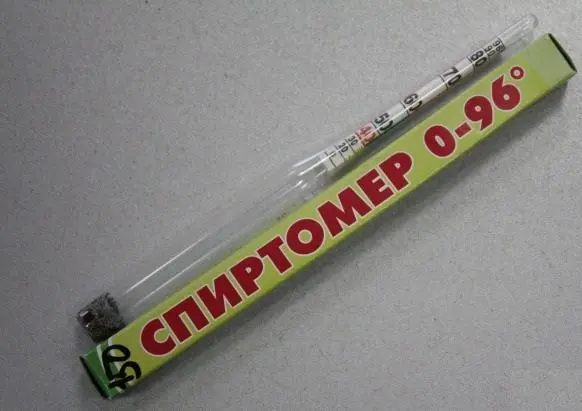
Digital (electronic) – works according to a different algorithm than traditional hydrometers. Differs in high accuracy of indications and speed of reaction of the sensor. In addition, most devices are equipped with a thermometer. The disadvantage is the high price.
Optic – used to determine the concentration of alcohol in a multicomponent solution (water, ethyl alcohol and other additives). Suitable for wines and liqueurs. It works according to a special algorithm, but in a narrower range (usually from 0 to 25 or 40 degrees).
To measure, it is enough to place one drop of material on a special prism, then view the result through the eyepiece. Optical hydrometers are expensive, but additionally show the concentration of sugar in the liquid.
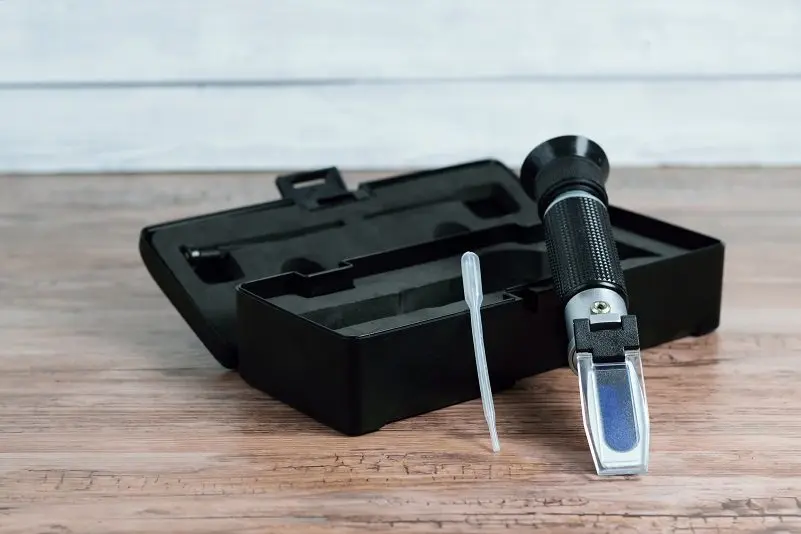
Rumochny – a compact alcoholmeter for determining the strength in a small vessel, for example, a glass. Most designs have a scale of 0-96%. The error depends on the model, but often the accuracy is lower than even that of household hydrometers.
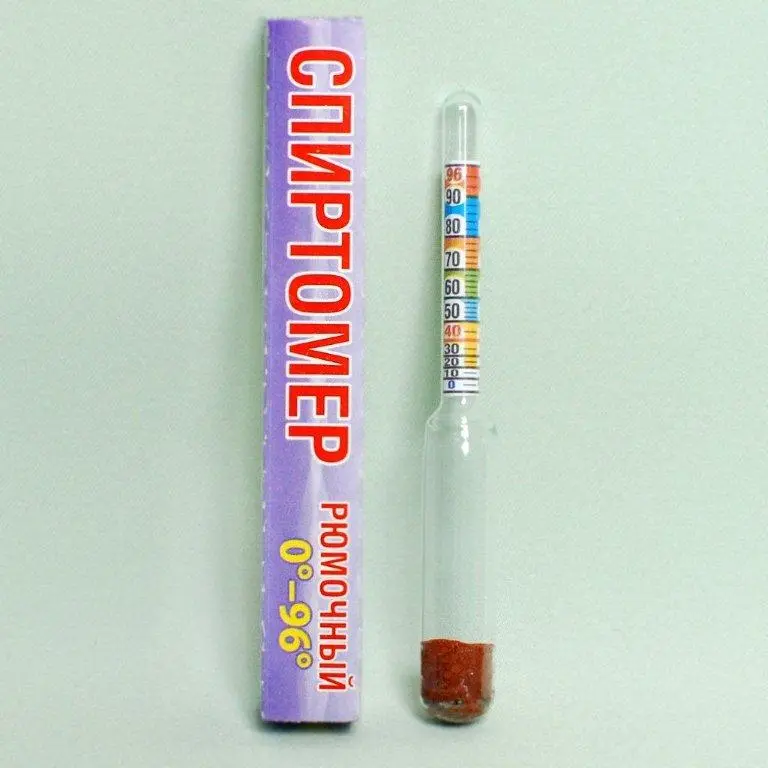
Wine meter – a kind of alcoholometer for determining the strength and sugar content in wines. Used by amateur winemakers. Most devices measure the sugar content of a drink in the range of 0-25%, alcohol – 0-12%. Due to the small scale, wine meters are not used by moonshiners.
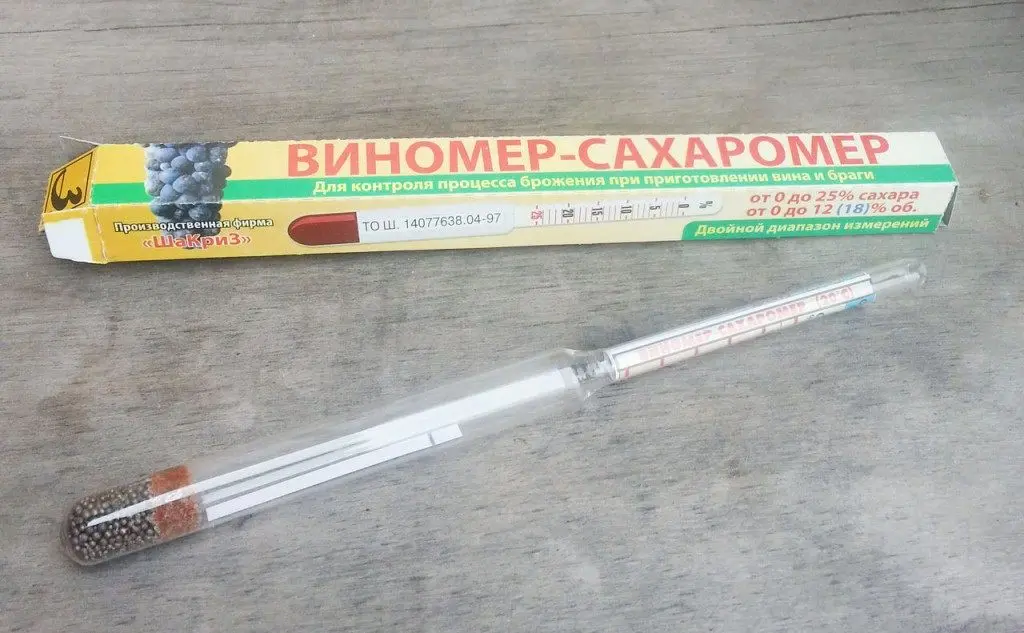
Initial conditions for measurements
1. The alcoholmeter should be stored in its original packaging, not subjected to shaking and other mechanical influences that could compromise its integrity and accuracy. Glass models are very fragile and break easily. If cracks, scratches or other defects appear, the device is damaged and needs to be replaced.
2. Most alcoholmeters are calibrated to work in a solution with a temperature of 20°C (deviation is not more than 0,5 degrees). At higher temperatures, the hydrometer overestimates the fortress, at low temperatures it underestimates. Failure to comply with the temperature regime causes a measurement error of up to 7%. The density of the liquid also depends on atmospheric pressure, the recommended figure is 760 mm Hg. Art.
3. All alcohol meters (except optical, electronic and wine meters) are designed to work with liquids containing only ethyl alcohol and water. Any other impurities (sugar, juice, tannins after infusion in a barrel, salts of heavy metals in water and even fusel oils of poorly purified moonshine) change the density of the solution, leading to inaccurate measurements.
How to measure the strength with an alcohol meter
1. Dilute alcohol with water, wait 5-10 minutes until the intensity of the chemical reaction decreases (a lot of heat is released at this time).
2. Wipe the hydrometer with a dry, clean cloth so that no greasy or dirty spots remain. The instrument must be completely dry before being immersed in liquid.
3. Bring the temperature of the solution to the recommended – 20°C.
An approximate correction of the readings of the alcoholmeter depending on the temperature of the alcohol is indicated in the table, the calculation can be done using a calculator.
Counting in progress…
Enter the initial data on the left
Real strength: % (vol.)
| Range (fortress) | 5°C | 10°C | 15°C | 20°C | 25°C | 30°C | 35°C |
| 20-60% | + 6 % | + 4 % | + 2 % | — | -2% | -4% | -6% |
| 65-80% | + 5 % | + 3 % | + 2 % | — | -1% | -3% | -5% |
| 85% + | + 4 % | + 3 % | + 1 % | — | -1% | -3% | -4% |
4. Pour the alcohol-containing liquid into a tall narrow container of small volume (volumetric flask, cylinder or beaker).
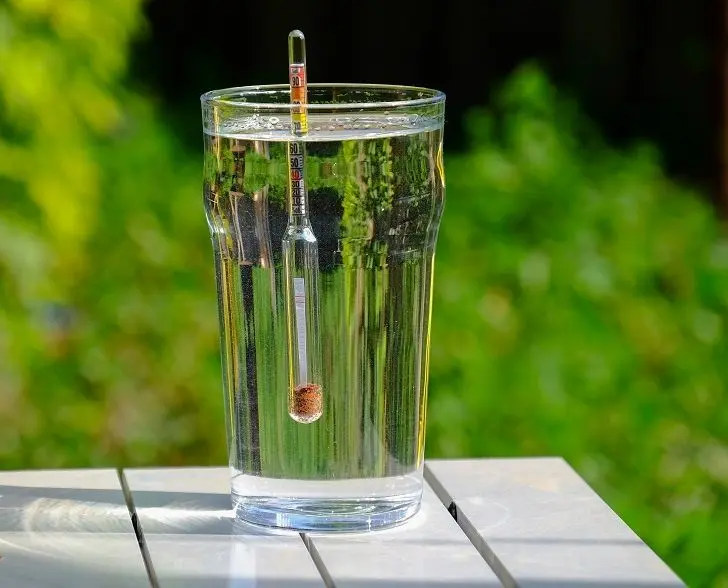
5. Gently immerse the alcoholmeter with the wide lower part into the liquid in the middle of the vessel. If thrown too hard, the appliance may hit the bottom and break.
The hydrometer must not touch the walls of the vessel!
6. Wait until the alcoholmeter stabilizes at the same level. If it drowned, it means that it is defective or not designed for this fortress. For example, the device operates in the range of 0-40%, but is lowered into 70% alcohol.
7. View the result. Depending on the design of the alcoholometer, readings are taken from the upper edge of the meniscus (red arrow) or from the bottom (green arrow). This point must be indicated in the instructions.
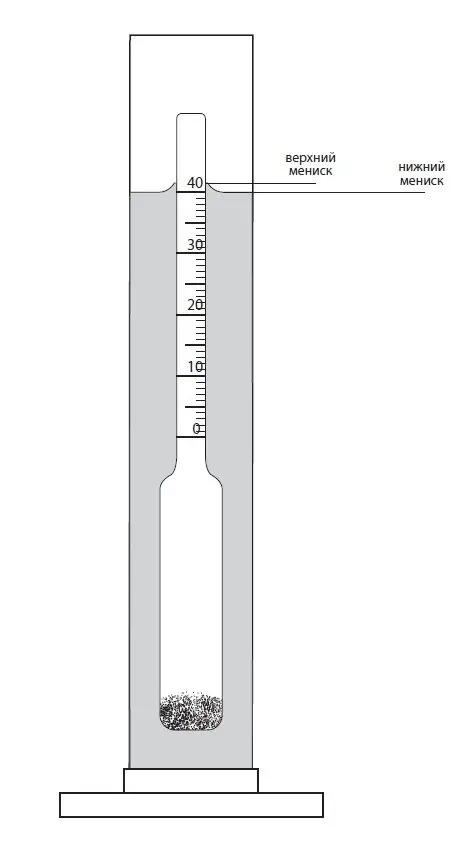
In most models, readings are taken from the lower edge of the meniscus.
At first, it is better to place the eyes below the level of the liquid so that the elliptical base of the meniscus is clearly visible. Then slowly raise your head, watching how narrowing, the ellipse turns into a straight line, at this moment see the result.
8. Remove the alcoholometer from the volumetric flask, wipe it, put it in the factory storage case.









